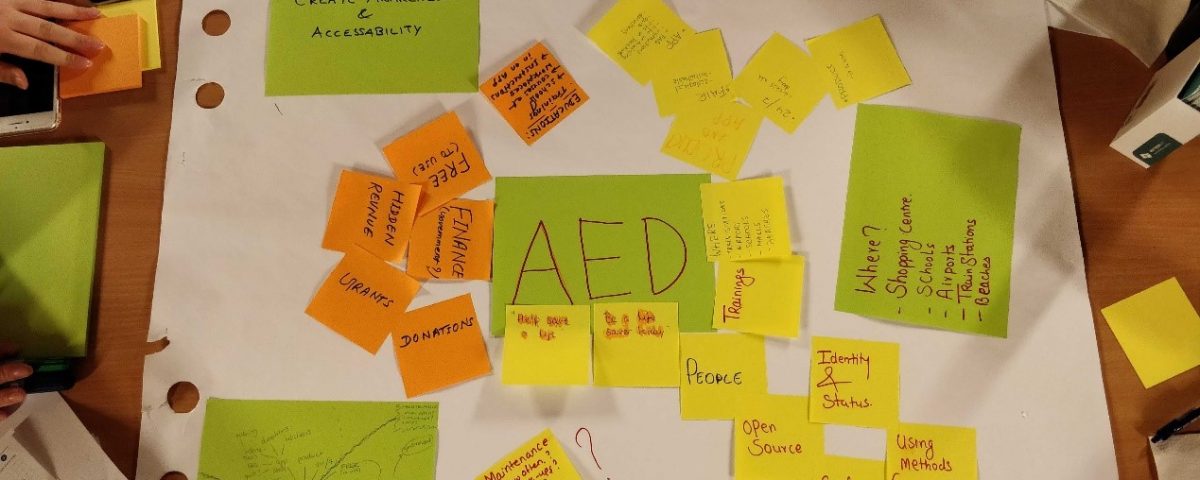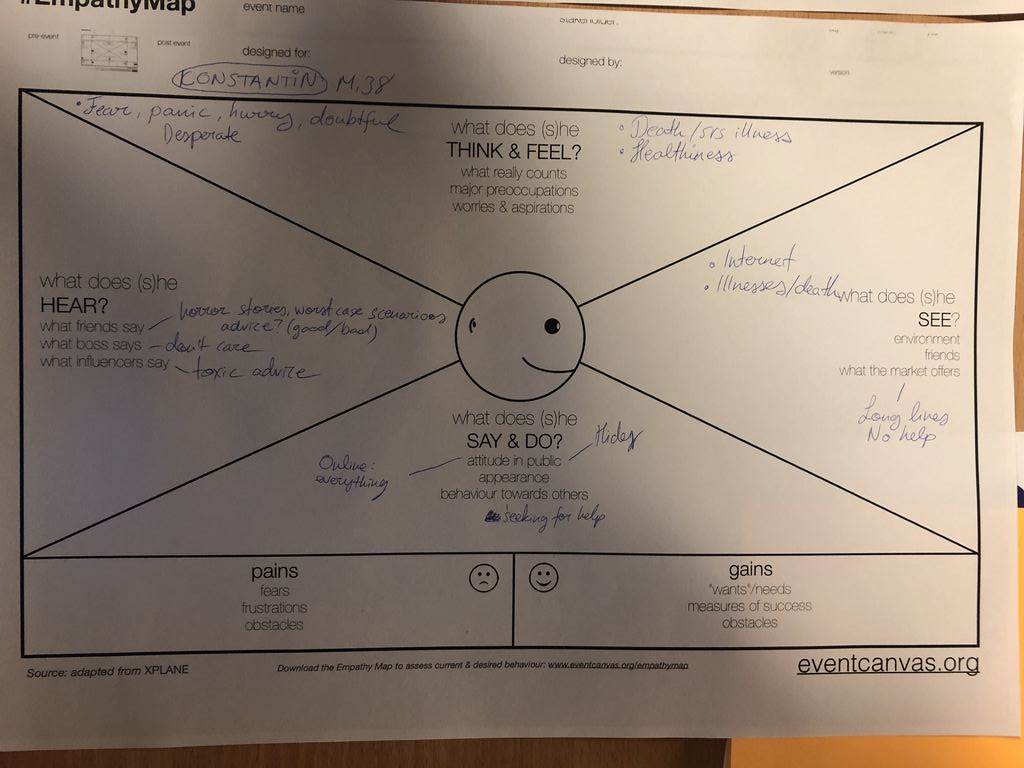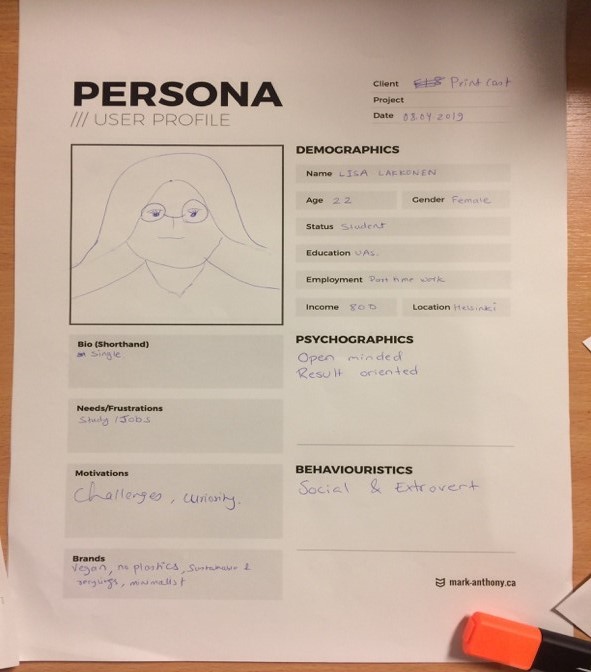During 8-12 of April 2019 we will be working with the Muddie-project for the third time. Muddie stands for Multi-Professional Digital Developer. As before, the week is joining Laurea UAS and Ardada UAS from Finland, Tartu Health Care College from Estionia and Riga Red Cross Medical College and Riga Cultural College from Latvia. This year we have also the pleasure to be joined by Haaga-Helia UAS and Metropolia UAS from Finland. We thank NordPlus for making this opportunity possible. This year we are enjoying the hospitality of the Riga colleges.
The challenges come from companies in the field of Digital health and welfare, and the students from different professions, health- and social sector, it, safety, business and design, work in nine groups taking on the challenge of developing a product during the week. Follow us on the updates of the creations. Each group will daily post on their work during the week.
SPĒKS team
Challenge: no available solution for early diagnosis and differentiating of child's migraine.
Big picture of the problem:
Background& Reason: migraine is connected with psycho- emotional status of child. Background consists of environmental factors including physical triggers, social problems and economical problems, heredity of migraine. So condition is what we dealing with: symptoms of migraine and mood affection, or just if person has regular headache. The purpose is to differentiate migraine from headache with other reasons and do this on early stage, e.g. in home environment. Parents should be involved in that process of evaluation, so provide guidance for whole family is one of the goals. Solution should be suitable for every day usage at home.
Empathy map:
Our potential customer is a 14years old boy with possible heredity to migraine, having regularly symptoms of strong headache. He feels misunderstanding and underestimation of his feelings from friends and family. Fear is also one of his feeling. It caused by ineffective taking of medicines when headache starts and its intensitivity. His normal life at school and part -time work is affected by migraine. He does not believe that someone can understand him and feel the same pain as he feels almost every week. That is the reason why he is procrastinating with visiting doctor. He is also scared of internet searching results he has performed. So he has more and more disconnection with society and his family. Indeed, his wish is to cure headache and have an active life as his classmates and friends.
ELF team
Challenge:
TET company are a user interface creator who are looking to make an application to identify the triggering factors of migraines. Our target age group are aged; group: 13 – 28 y.o. we tackled the problem from a holistic view and narrowed our search to identify the key factors that mean most to the topic. Then we created the empathy map and persona for the ideal customer profile to try to understand the problem fully before developing a solution.

CO-MIND team
4 first steps to make a digital solution for the man of today.
The opening phase of today´s Muddie week was to select a customer and understand the challenge set out by them. Using this information we worked towards developing our approach using The Method kit tool for customer understanding.
This was followed by a prioritization discussion to map out our time line plan for the project.
Step three introduced the Empathy Map methodology for understand our possible client, which was followed up by the final step in creating a customer persona of Ben Backproblems.
Fantastic Five team
Today’s main aim was to pick a challenge provided by a local service provider to promote and develop a service to run with their existing product. The client sees as the major problematic area the implementation of the service specially among the intersectoral professionals working the field. Our aim is to not only to develop a well-functioning service which is practical to use but also based on EBP. Our major challenge is to get acceptance and cooperation between physical therapists and traumatology experts.
The product is used due to a trauma or short-term disability. It´s relatively affordable and rather easy to produce, but the main problem is the lack of communication and agreement on treatment plans and methods and hence creating dysfunctional vibes between the professions.
Upon working in group and mapping the potential customers we found that the product is considerably more positive inducing than negative. From a health promotion view we see it as a revolutionizing service/product that has the potential to grow as a business but also as an important element of rehabilitation, specially among children and active individuals.
As a potential customer we took the experiment to the extreme and painted the image of a typical 21 century young lady with a considerable amount of social pressure and the need for active lifestyle not only as a physical element but also as an esthetic part of her appearance.
FINLAT team
Challange:
How to implement AED in Latvia?
We are doing project for the SEMS. We have a project module where we are going to install the AED devices in various place of Latvia. AED (automated external defibrillator) is a portable device that automatically diagnoses the cardiac arrhythmias.
In the picture above you can see the priority number one for our challenge is to create awareness and provide accessibility to the machines.
The different ways we have planned to do this is by having ads of the machines and having an app that people could use. In the app the information provided includes the locations of the machines, information of trainings, asking for donations, FAQ and possibly a quiz people can take to make sure they understand how everything works. They would be free and accessible 24/7.
For the finances we had thought of using donations, as previously mentioned, as well as possibly getting a grant and using hidden revenue aka sponsorships / ads on the machines.
For the people using it would create a status and identity of being a ”saver” and we have come up with slogans to fit this We had also discussed the possibility of trainings at school and workplaces as well as having courses available. We also discussed possible locations of which all would be places where there are many people.
In the picture above we can see about how a person feels about the situation. We think about the person in the situation and what he feels about it. He might feel a bit nervous and stress when he is in the situation. But he also feels heroic and very responsible for saving the person lives. We have situations where he might hear different things form the people around. What he have to deliver for to raise the awareness about the device and its use. We also think about the as a whole where people have access to the devices around the places they live.
This persona is connected to the previous empathy map. The idea was to have the same person to be in both. The reason he is named Heroic Harry is due to his nature of wanting to help and being brave enough to do it and use the machines. We wanted to make him to be as average as possible to show that anyone could use this system and benefit from using it, also while helping others on the process. We wanted the person to be empathetic and kind who as a motivation would possibly had lost someone and therefore wanted to help or just naturally be a helpful person.
RIDES team
Challenge: migraines and under 13 years olds.
Our main challenge was to discover if the headaches for the children under 13 years of age was a migraine. And to find out the triggers so that children and parents together can prevent it.
A picture from the method kit cards for our challenge:
Our client was a 10 years old kid named Ryan. He has unexplained headaches often and many symptoms. His parents observed some behavioural changes in him like lights sensitivity, avoiding from all the activities that are necessary to the kid of that age. He is afraid of all the symptoms that he is getting often with the irresistible headaches.
Then our journey leads us to empathy map, where we came up with key findings of our problems such as what does Ryan feel, think, see, say and do when he is getting this terrible pain. We came with the conclusion as pains and gains as follows:
As mentioned already about the client Ryan his needs are good clothes, food, physical activities. But he is frustrated with schools, friends and keeps himself socially exclusive.
ASK DJ team
CastPrint challenge:
Lack of information and experience and professional experience. Education and communication card. Our personas are doctors and patients.
The doctor is Jarmo 45 year old that is motivated to give the best possible care to his patients. He likes stability and does not like to take risk. Empathy map the doctor interested in more information but he has not heard anything about it from any professional enviroment. But he admit that product is interesting. At this point he will not recommend it.
The patient Lisa is 22 year old and open minded. Student that likes challenges and is curious. Result oriented and cares about the environment. The patient interested in healing and everyday life and socializing. Hears about different alternatives from social media. She is happy and confident and trust in the doctors.
Tetsem Bridge team
The company whose challenge we will be tackling is Blue Bridge. The challenge was to create a better patient portal with a user-friendly interface. In order to carry this out successfully, we have to pay special attention to:
We used cards in order to get a better idea of the project’s big picture. Thereafter, we created an empathy map in order to create a profile of our target client’s persona.

DIGITAL CHEESE team
Today we met with the group and got to know each other. We listened to companies´presentations and decided to work on a challenge by Anti-Aging Institution. We are working on marketing strategies for their new app. Together we have created a persona and empathy map for our target client.
Our problem is how to bring more people in to the anti-aging app and scale it by broadening the target group and creating loyal customers. We crated a framework to how we would solve the problem using the cards. We prioritized what we need to focus on during the week and created a customer journey using the cards. By using the empathy map model we visualized our customers inner most feeling, concern an persona and her needs and pains.
Lastly we created a persona profile about her, there we described her motivations and made a short bio about her to see whom the person using the app is.

















